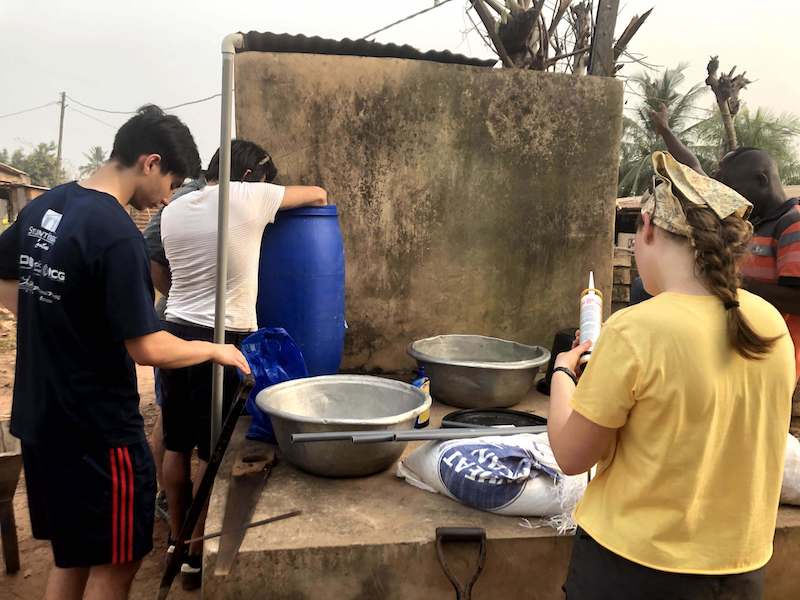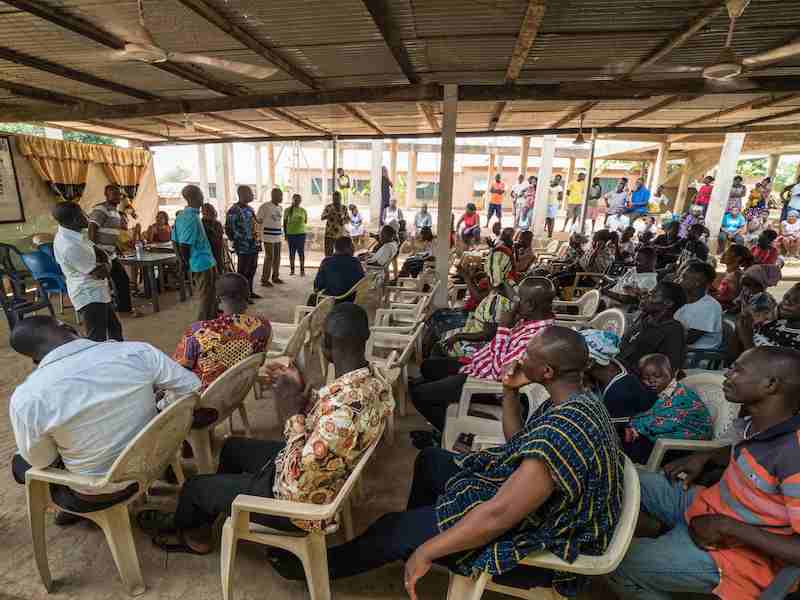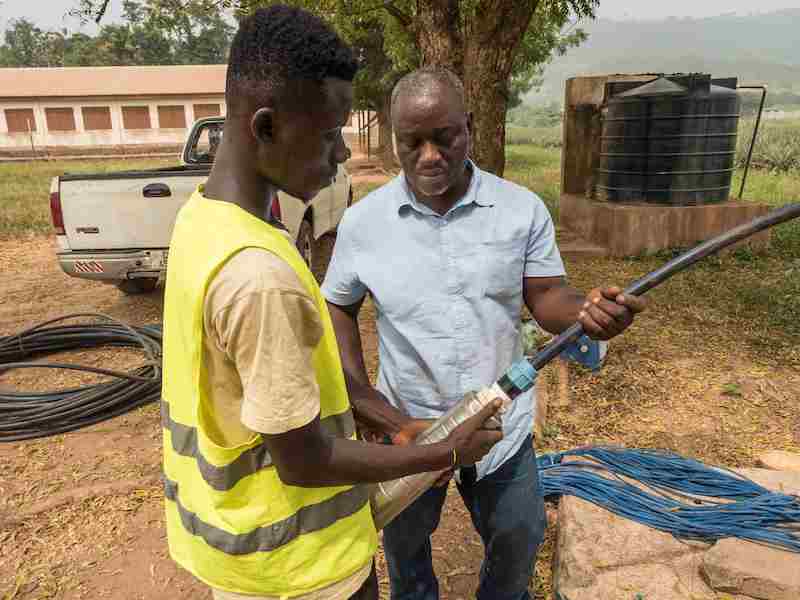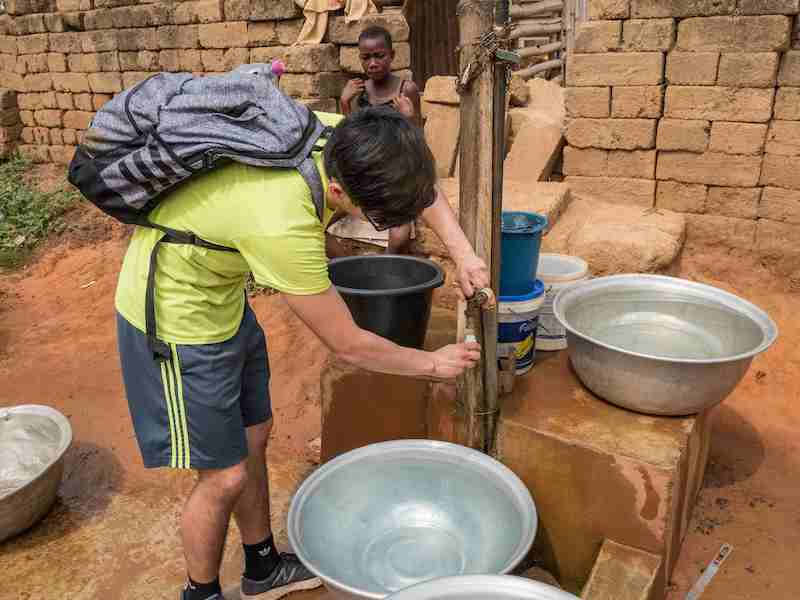

The Columbia University chapter of Engineers Without Borders aims to address the problems facing people both locally and overseas by leveraging the skills, talents, and passions of Columbia University students and the sponsorships formed with our organization. Our members are pursuing many different engineering degrees, but all share the desire to do meaningful work and make a difference.
The chapter currently consists of three programs in Ghana, Uganda, and Morocco. The Ghana program, which started in 2004, successfully built a water distribution system and latrines in the farming community of Obadan. It’s now in the process of implementing a similar water distribution system in the nearby village of Amanfrom. Each program draws from the skills of its members to provide technical solutions to worldwide problems.
In 2014, the village of Amanfrom contacted us asking for a water distribution system similar to our past project in Obodan. Amanfrom relied exclusively on seasonal surface water and shallow groundwater from streams, springs, and hand-dug wells –all of which failed to meet WHO standards. To address this issue, we drilled and constructed two new wells within the community during our first implementation trip in August 2016. These two new reliable sources of water have greatly increased the water capacity of the community. The local government has begun collecting small fees for water, which enables them to save funds for maintenance, repairs, and future development projects. By 2018, we’ve implemented a total of four boreholes –three of which provide potable water– and two spigots. The Hilltop Borehole in the north of the community had the potential to provide high water yield, but was permanently closed when it was discovered to contain levels of iron and manganese that exceed WHO standards.
In January 2020, our travel team conducted water quality tests which showed improved results for the JHS borehole and JHS spigot, and slightly above-standard values for turbidity, iron, and manganese in the Primary School borehole. This data allowed the team to move forward with installation of hand pumps on the southern boreholes. Installation was successful at Primary School, but due to a regional shortage of supply of Ghana Modified India MK II hand pumps, the Borzay hand pump was not installed and is currently still missing. In conjunction with the Ghanaian government’s Community Water and Sanitation Agency (CWSA), we successfully formed a new Amanfrom Water and Sanitation (WATSAN) Committee that was approved by the village to oversee the day-to-day operations and maintenance of the water infrastructure system. We continue to share engineering and administrative resources with the WATSAN Committee and there are good indications that the committee will provide stability for the continuation of the project in the future.
In response to surveys indicating a continuous reliance on streams and hand-dug wells, we constructed a ‘proof of concept’ biosand filter that can treat bacteriological contamination from these sources to further expand clean water access. While the community decided to reject the final project proposal, we published our research and development report on Volunteer Village to guide other EWB Chapters with similar water treatment issues.
Our 2022 project goals incorporate Engineering Without Borders’ mission to “implement appropriate solutions that communities are equipped to maintain.” Before transferring complete ownership of the water infrastructure to Amanfrom by December 2022, we aim to establish the current water infrastructure to its fullest potential. Remote feedback from the community shows that the hand pumps at Primary School are too stiff for children to use and there is still a need for easier water access in the north of the community with the Hilltop Borehole closed. Based on this information, our Water Team is currently developing spigot extensions paths from the JHS Borehole. They are working closely with our professional mentors to develop a feasible pipe pathway given the uphill terrain north of the community. We will also facilitate reinstallation of the hand pump system at Primary School and add the much awaited hand pump at Borzay. By summer 2022, the WATSAN committee will receive additional water infrastructure maintenance training through the CWSA and gain further skills to manage the infrastructure on their own. We are hoping to have a successful remote implementation trip this summer and are currently organizing several fundraising campaigns to finance our expenses.






The Ghana program almost immediately began work in Obodan and constructed a Kumasi Ventilated Improved Pit in the village in 2005. After repairing biogas latrines and building a rainwater harvesting system in a nearby village for a few years, the program returned to Obodan. Ghana program members have overseen the successful installation of nine latrines in Obodan and surrounding villages.
Once the design and construction of latrines neared completion, the water project became a major focus of the Ghana program's work beginning around 2011. Assessment teams surveyed the land for data on elevation, conducted many water quality tests around the year, met with local contractors and technicians, and helped the community determine the best way to collect money for when the system needed maintenance. In the summer of 2013, the Ghana program constructed the water distribution system. The system consists of an electric-powered submersible pump, two 10,000 liter storage tanks placed on top of the hill in Obodan, and an extensive framework of pipes to deliver water by gravity to spigots conveniently located around the village. The water, pumped directly from the water table, avoids almost all of the contaminants that pollute surface water or shallow groundwater, and is safe to drink by Ghanaian and WHO standards. The location of the spigots eliminates the need for villagers to cross any road, and drainage ensures that any water is accidentally spilled near the spigots does not flood and contribute to erosion.
As of 2016, the water distribution system is financially sustainable and functioning independently, while the latrines are community owned and operated. The money generated from collecting fees at the water spigots have generated revenue for other community projects in Obodan.